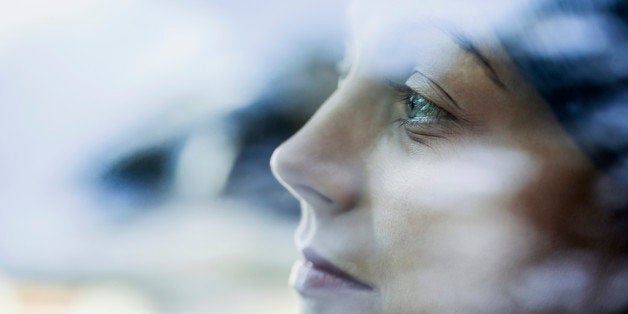
"Are we still of any use?"
Bonhoeffer asks this question as he considers the Holocaust--looking back at both human depravity and the complicity that keeps "good humans" from acting. What turns all of us into bystanders and benefactors, safe in our homes, content not to rock the boat?
In the face of such staggering human loss, what can we say? Why do we humans harm each other, again and again? And is it possible to prevent atrocity and complicity?
For the week of July 27 through August 1, I participated in the 2016 Annual Seminar on Ethics, Religion, and the Holocaust at the US Holocaust Memorial Museum, "Good, Evil, and the Grey Zone: Religion's Role in Genocide from the Holocaust to ISIS."
Alexander Hinton, author of Why Did They Kill? Cambodia in the Shadow of Genocide and the forthcoming Man or Monster? The Trial of a Khmer Rouge Torturer in Cambodia, and Timothy Longman, author of Christianity and Genocide in Rwanda, and the forthcoming Memory and Justice in Post-Genocide Rwanda, co-taught the course, which included examination of intersections of religion and genocide and the profound moral implications of the Holocaust.
One surprising thing I learned? Uncritical thinking makes us complicit.
One way we begin to participate in the kind of othering that leads to our ability to imprison, maim, rape, kill and disenfranchise is to reduce fully human individuals and complex groups to simple, straightforward tropes or stereotypes. In one of his lectures, Hinton encouraged us to question the tropes that often come along when we "read" accounts of mass atrocities and genocide. (And the examples in this reflection borrow heavily from Hinton's examples to us during the course.)
For example, when we look at potential warning signs of genocide in an African country and say, "This is typical tribal conflict," illustrating the report with an image of a machete, we are reducing the complex political, cultural, and individual experiences to something that is both easier for us to consume, and easier for us to dismiss.
If we hear reports that religious minorities in northeastern Iraq are being persecuted, and a superficial analysis of the situation concludes, "These tribal conflicts have been going on for centuries," we are both absolved from seeking more information and discouraged from acting.
When we learn that a regime is systematically displacing, imprisoning, and curtailing the rights of some members of a population, and refrain from acting because "this is part of an internal civil war," then we both miss the opportunity to work for universal human rights, and become complicit as international bystanders.
Vigilant, critical thinking should become a practice as we read international news and participate in local civic engagement. If something seems easy to understand, we must question: What more can we find? Who else can we hear? Is there another perspective we can surface?
Even the act of trying to build frameworks for forgiveness, reconciliation, and transitional justice has the potential to diminish complexity and the reality of human experience.
Think of the last time you've seen a flyer or website encouraging awareness or help for people affected by a disaster or human rights violation. How was it illustrated? Who was depicted in the photographs?
Often, we see photographs of a woman or child, and they are suffering poverty or obvious emotional pain.
In this way, the photographic lens--and our "reading" of the image--reduces the actual humans depicted into a flat, easily consumed definition: victim.
Part of genocide prevention work includes a flexibility of thinking, the ability to toggle back and forth from multiple perspectives including:
What is the first story, who are participants in this local struggle, which religious institutions are benefiting from regime changes, what is the second story emerging?
Which women are choosing to leave and which are choosing to remain, whose definition of "rape" or "sexual assault" is dominating policy making, and which ethnic groups are remaining silent--and why?
All of these questions have answers that complicate decision making and can slow down action. And yet, problems with multiple sources of conflict and with multiple affected parties require mindfulness and agility in addressing them.
Read carefully. Re-read. Question metaphors, images, tropes, and "received wisdom" about policies and the international community. Have the patience for longer, complicated answers, and be willing to learn new phrases, ideas, and norms.
Resist applying a Western, Judeo-Christian framework of justice, forgiveness, or community to other settings.
Resist easy answers.
And value critical thinking as a skill that needs to be taught, practiced, and modeled at every level of education and political engagement.
